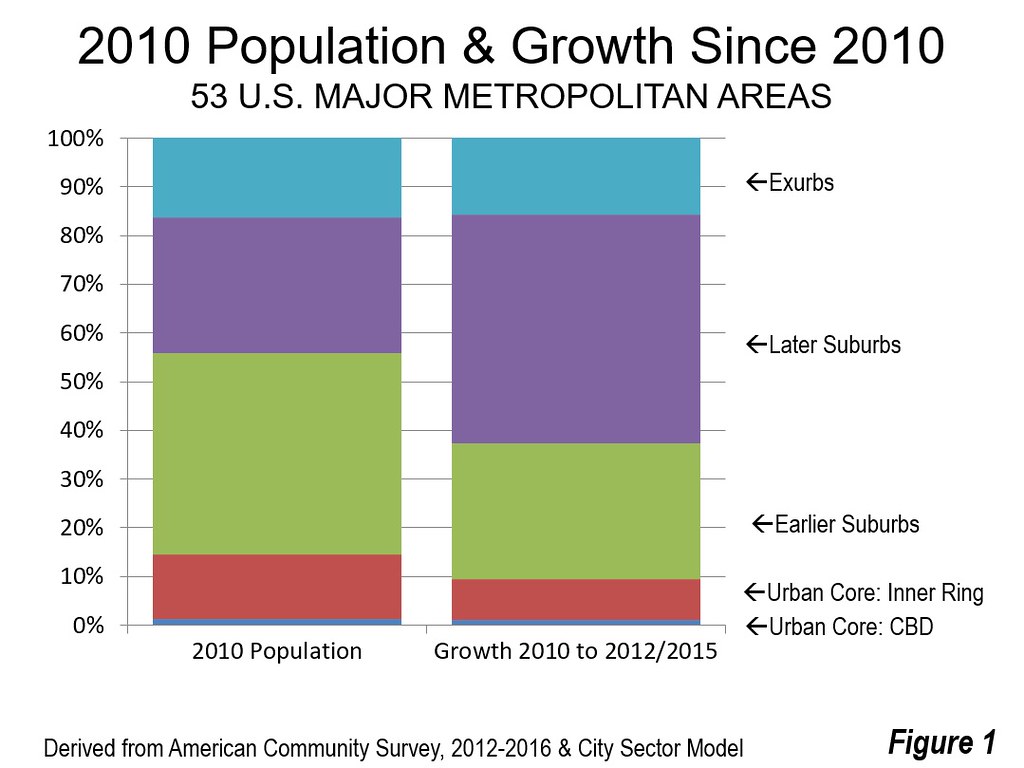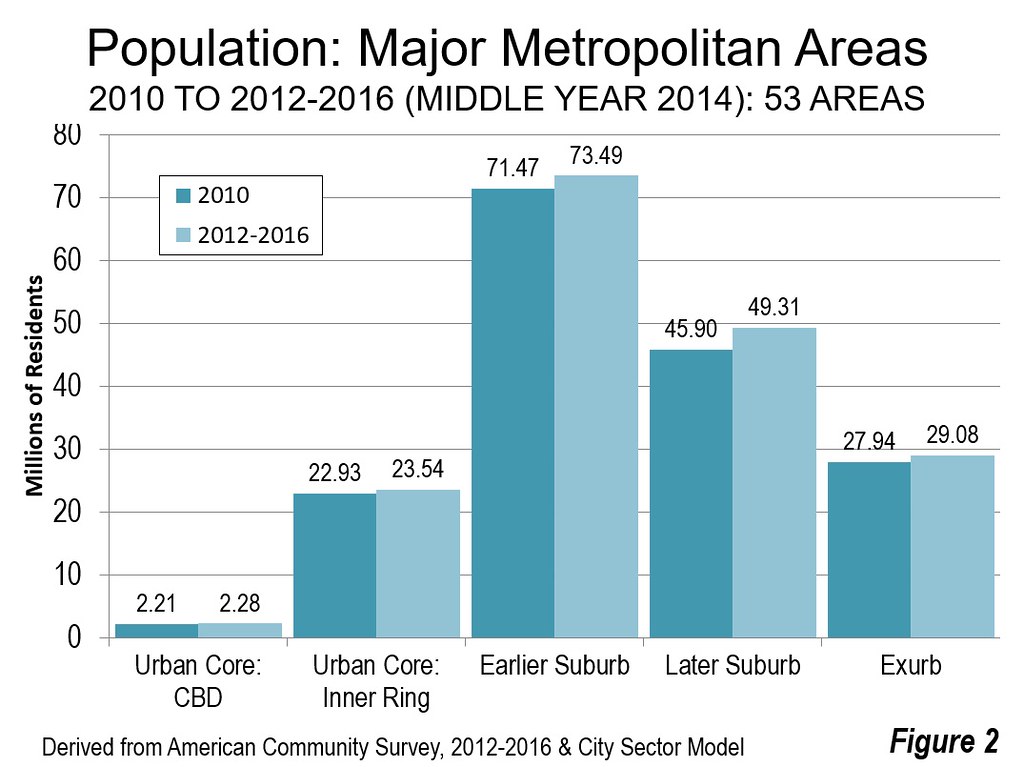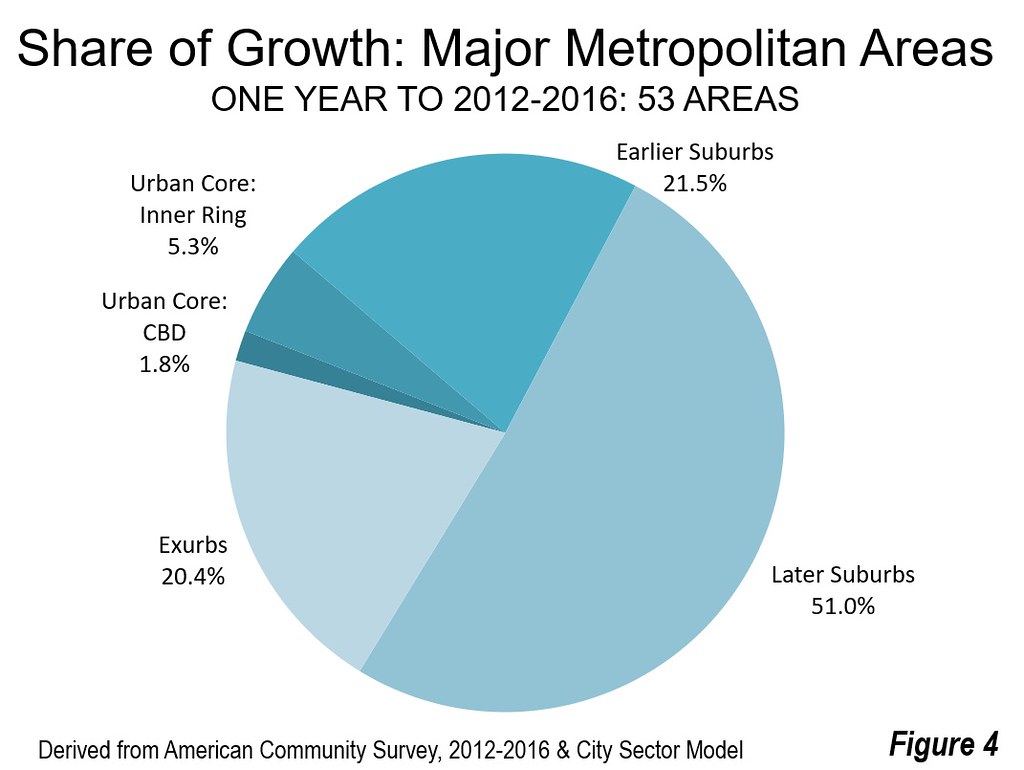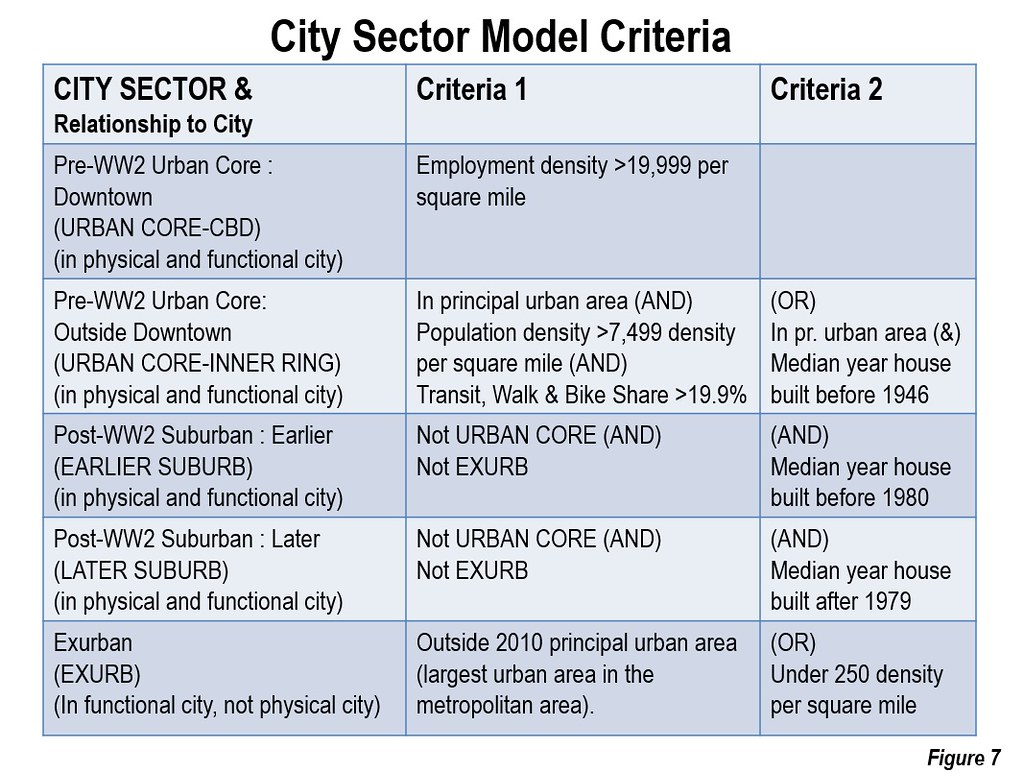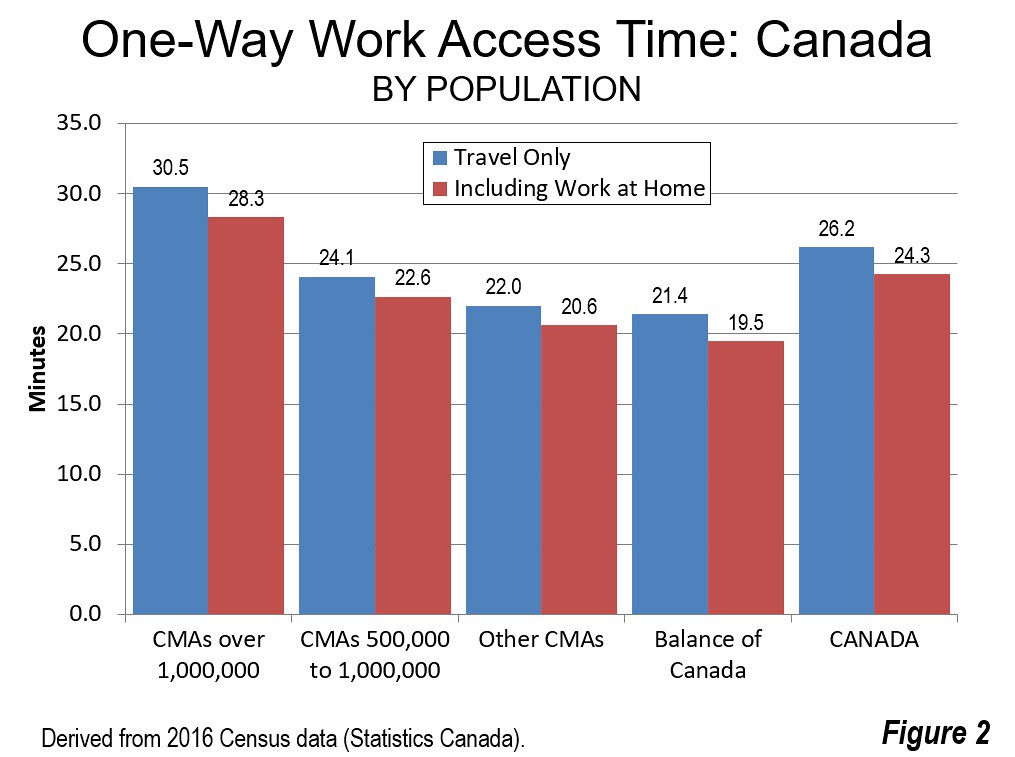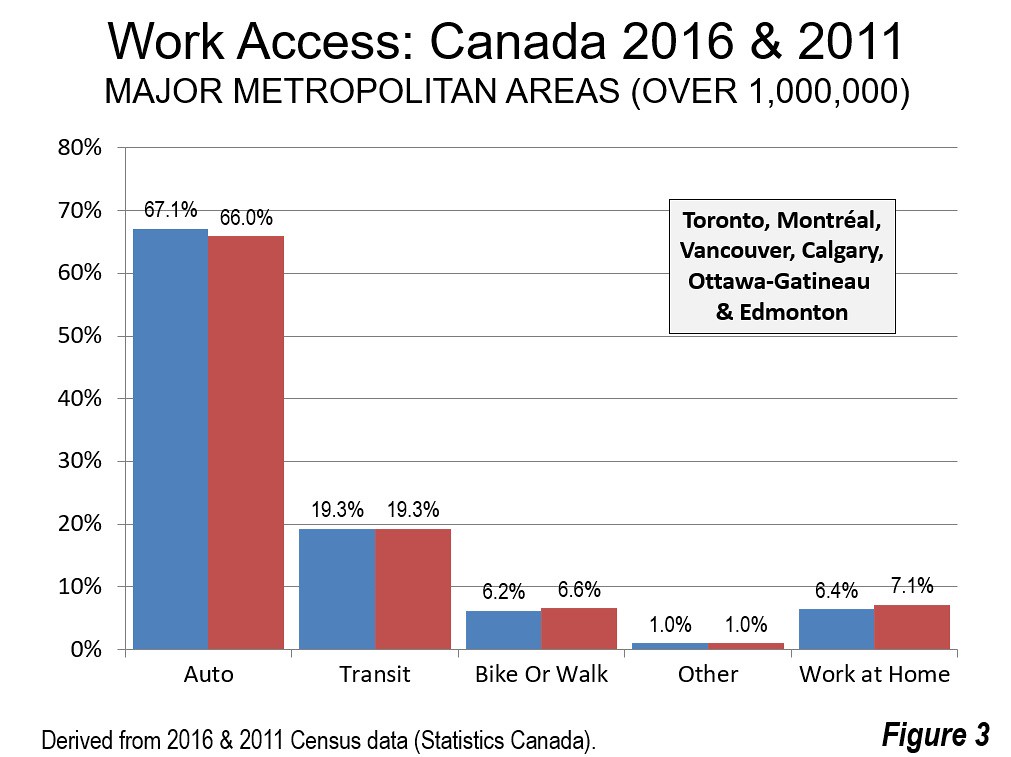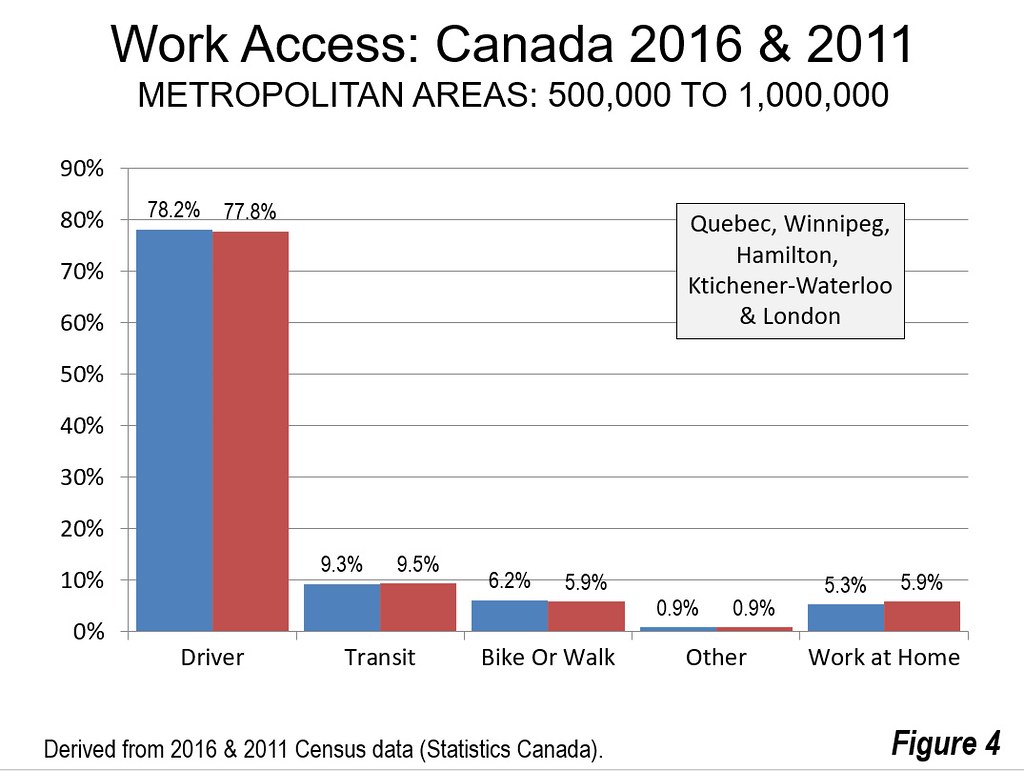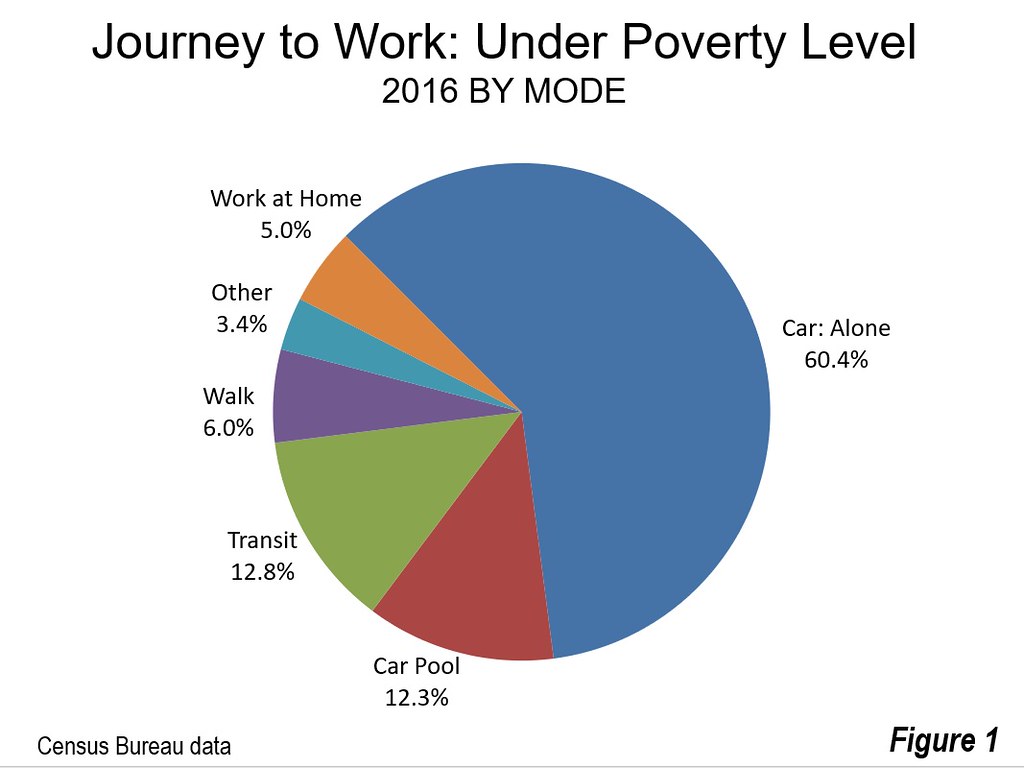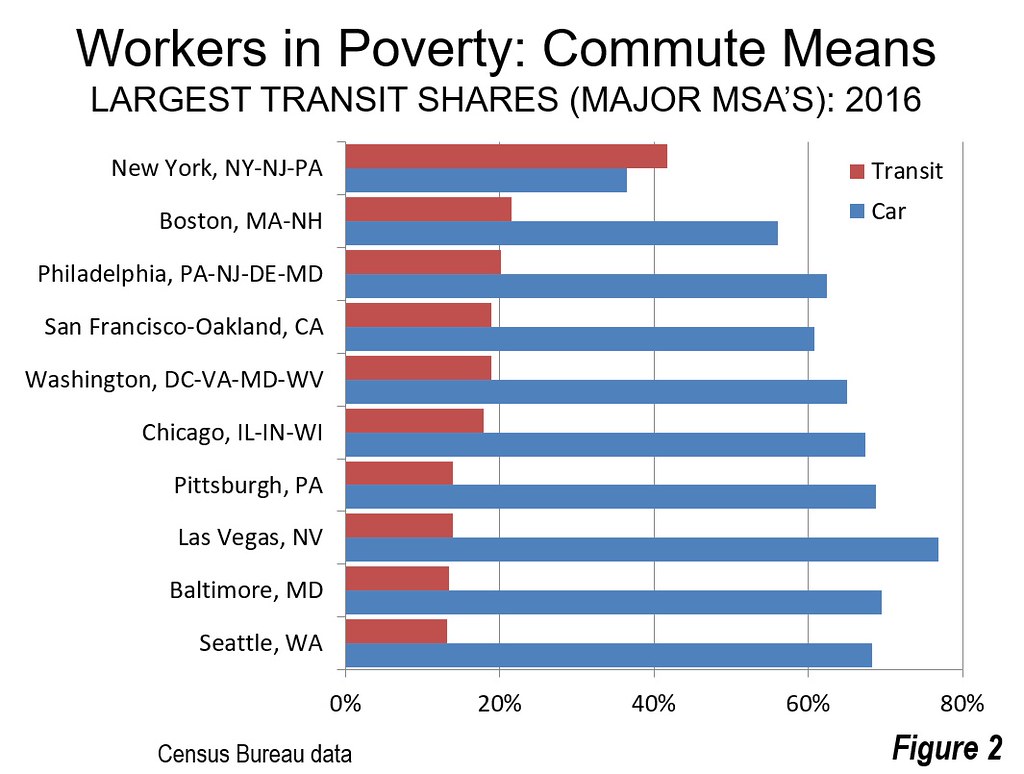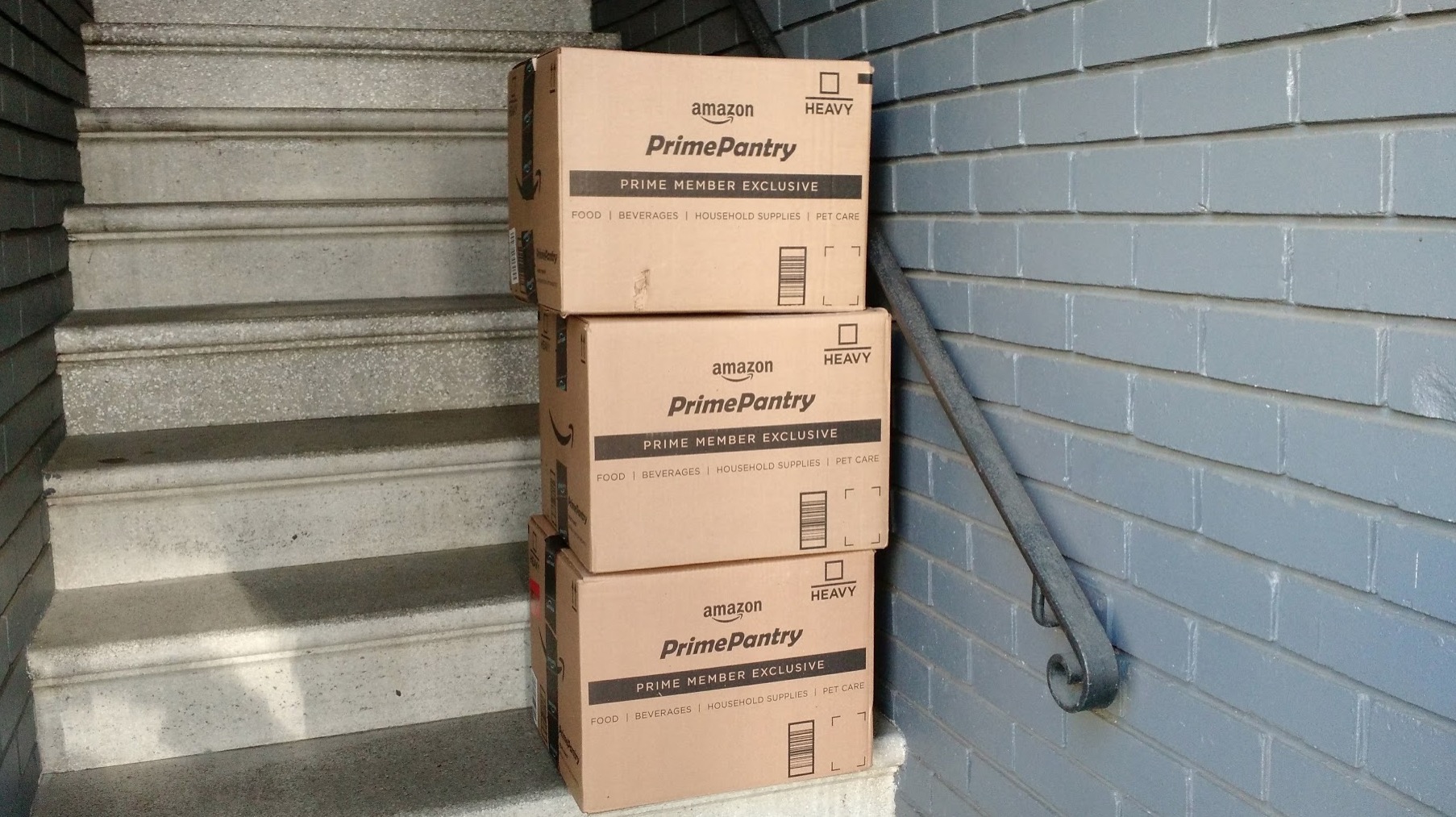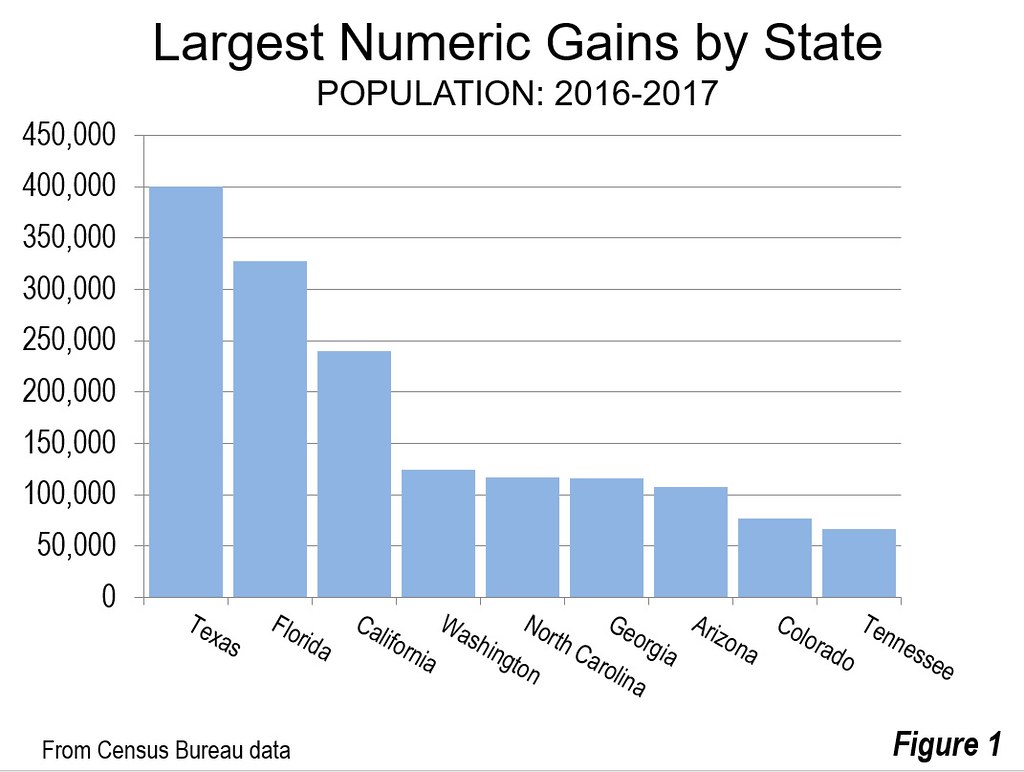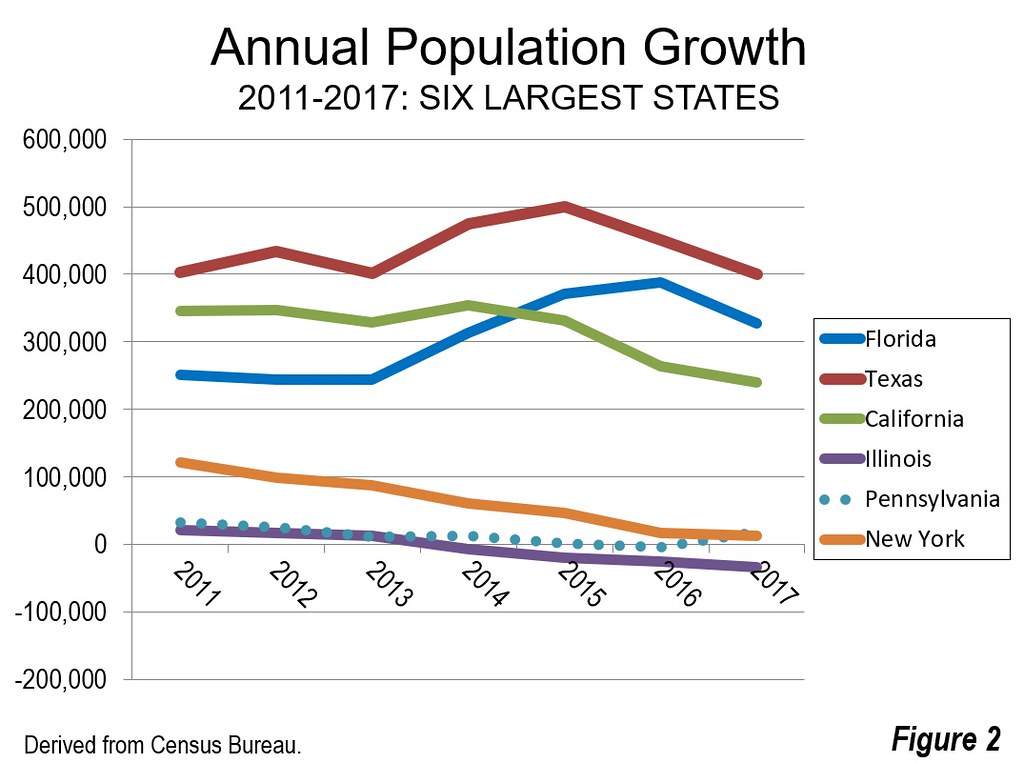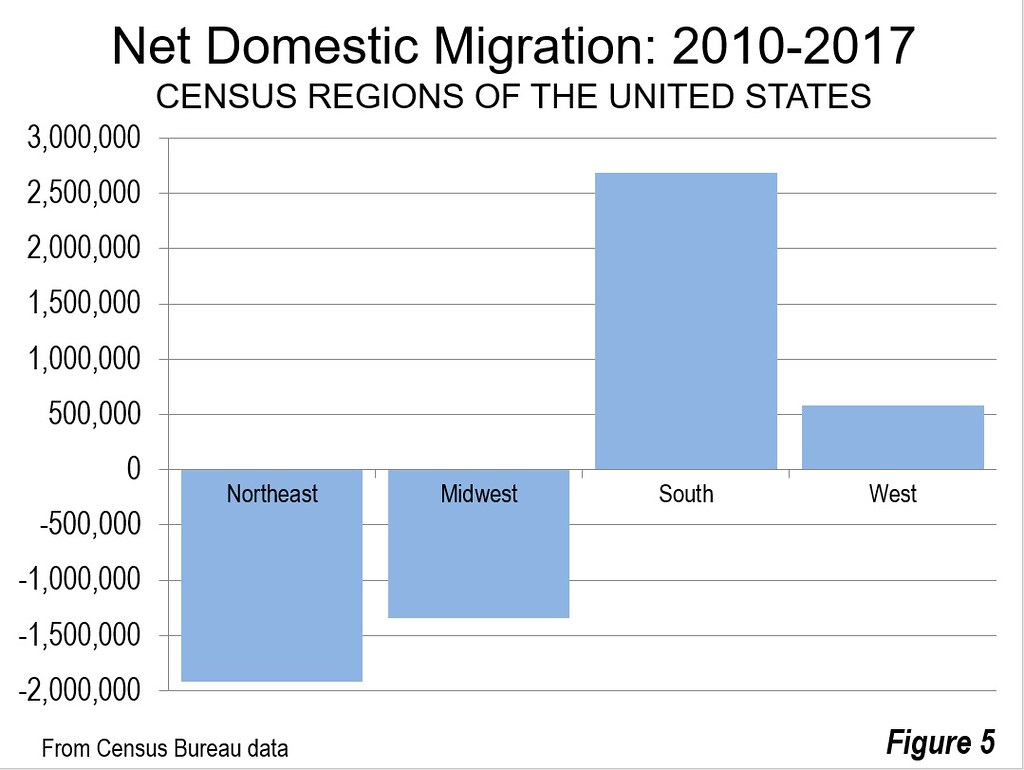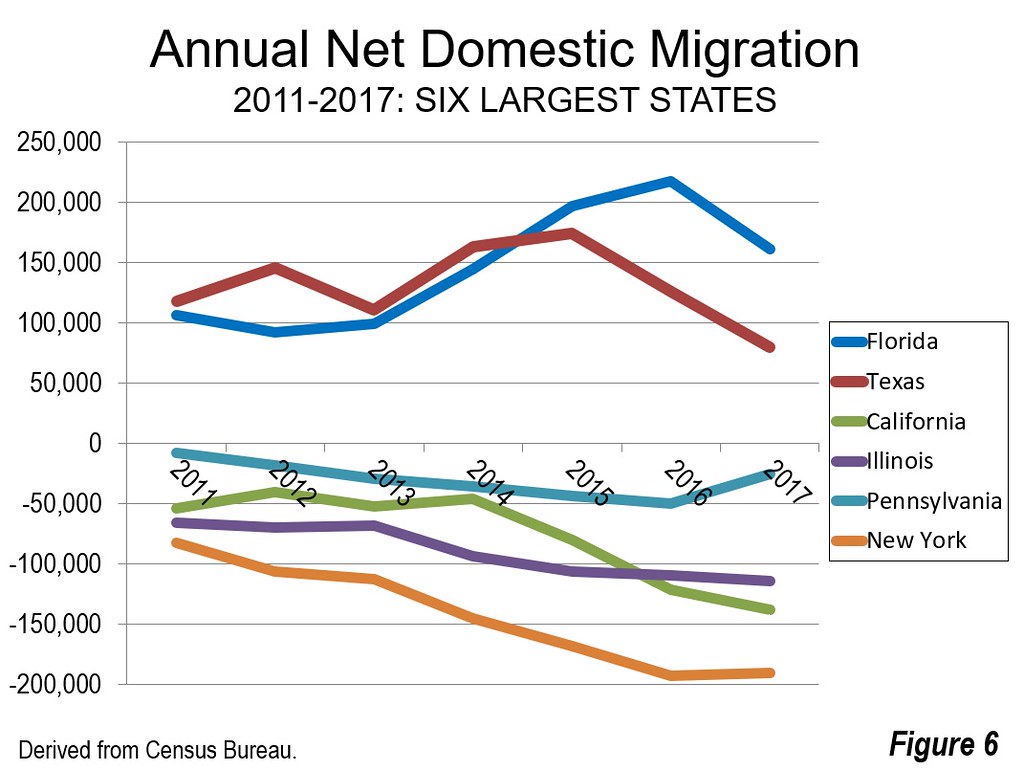Beneath the sex scandals, moronic tweets, ridiculous characters, and massive incompetence that dominate Washington in this mean period of our history lie more fundamental geopolitical realities. Increasingly it is economics—how people make money—rather than culture that drives the country into perpetual conflict.
The tax bill brought that conflict to the surface, as Republicans made winners of Wall Street and the corporate elites, as well as most taxpayers and homeowners in lower-cost states, and losers of high-income blue-state taxpayers in high-tax states such as California, New York, and New Jersey.
A U.S. News and World Report headline denounced the bill as a declaration of “War on the Blue States,” comparing it to the infamous Kansas-Nebraska Act that allowed those states to determine whether to adopt slavery in the face of Northern objections. Others in the blue world suggested the bill meant that America no longer wishes to be “at the forefront of the new economy.”
Many progressives see their vision of a post-industrial economy—green, high-tech, and media-centered—as representing the enlightened future. The blue states are all too often hostile to the manufacturing, agriculture, and energy industries critical to the heartland’s, and the nation’s, future prosperity and security.
The Great Divide
A look at the current Republican majority explains much of our new sectional divide. The states with the largest share of jobs tied to industry (PDF)—Indiana, Wisconsin, Michigan, Iowa, and Alabama—all went for Trump. In contrast, the share of manufacturing jobs in key Clinton states like New York, California, and Massachusetts is no more than half as large.
Differences are even more stark in industries such as energy, mining, and agriculture. The watershed of the Mississippi River, largely controlled by Republicans, is the source of 92 percent of U.S. agricultural exports, and 78 percent of global feed, grain, and soybean exports. The only other major player is California, whose position is threatened by water policies and the prospect of renewed drought.
Perhaps even more politically critical is the energy industry. The top three states for oil and gas jobs—Texas, Oklahoma, and Louisiana—are all deep red. Much of the recent growth has been in the industrial heartland states of Ohio and Pennsylvania, as well as oil-shale-rich North Dakota. All went with Trump.
Blue states have generally abandoned these basic industries. In fact the third largest energy-producing state, California, seems determined to eliminate its once powerful oil and gas sector, while New York, unlike its neighbors, has decided to strangle the emergent shale oil industry in its crib. Manufacturing, on the rise in much of the country, is stagnant or declining in many blue states. Some of the most precipitous drops in the numbers of highly paid blue-collar jobs overall since 1991 have been in California, New York, and Illinois (PDF).
Interior California and upstate New York—the red parts of the big blue states—have declined into a kind of Appalachian dystopia. Nearly half of the 16 counties with the highest percentages of people earning over $190,000 annually are located in California. Yet, the state also has a remarkable 77 of the country’s 297 most “economically challenged” cities based on levels of poverty and employment. Altogether, these troubled cities are home to roughly a third of the state’s population.
California has been portrayed as a “boom state” because of strong growth in finance, technology, media, and tourism rather than tangible production. Workers in these industries tend to be far more liberal than those in manufacturing, mining, energy, or agriculture, and to congregate in the highly urbanized parts of the state.
The professional and business services sector, clustered in New York and Chicago, also amounts for the highest share of all jobs in the blue bastions of Washington, D.C., Northern Virginia, San Jose, and San Francisco.
A similar pattern can be seen in the information sector, which includes software as well as entertainment. Here, Los Angeles leads in total jobs, followed by New York. But the highest share of workers in information can be found in San Francisco, San Jose, and Seattle—all sterling examples of the blue-state economy. These areas claim they are paragons of “opportunity”—and it’s true if you have rich parents, an H1B visa, or a Ph.D.
One blue-state author sees a divide between two economies: “one modern, stable, and healthy, the other backwards, impoverished, and sick.” Slate declared that middle-class jobs in manufacturing and construction are “never coming back.” That was true, until it wasn’t. Over the next decade, there could be a shortage of 2 million manufacturing employees, according to a report this year by Deloitte and the Manufacturing Institute (PDF). More, the “backwards” places in fact employ many skilled people; of the 20 metro areas with the most engineers per capita, only one—Silicon Valley—is located on the East or West Coast.
Crucially, red-state Americans tend to live in more egalitarian regions. In the true-blue economies, employment tends to be highly divided between high-wage workers in finance, media, tech, and business services and low-wage people laboring as cleaners, nannies, retail clerks, and the like. This is one reason why the blue states voting for Clinton, as progressive economist James Galbraith has demonstrated, have far higher levels of inequality than those places, largely in the interior, which supported Trump.
A Tale of Two Presidents
“Elections have consequences, and at the end of the day, I won,” new President Barack Obama famously said in 2009, as his bank bailout and stimulus that gave aid to overstretched governments benefited the places where finance is based and where public spending tends to be the highest.
He also supported the expansion of mass transit, something that mostly benefits a handful of dense and deep-blue “legacy cities” beginning with New York but also including San Francisco, Chicago, Boston, Philadelphia, and Washington, D.C. His spending did much less for areas away from the coasts where transit is insignificant, large financial headquarters are distant, and government is generally smaller.
Perhaps the biggest sectional divide, however, was over energy. Obama’s environmental policies were popular in blue states, most with little in the way of energy industries. It was far less so in places where energy constitutes an important part of the economy. More important still, while his subsidies for green energy thrilled Silicon Valley and some Wall Street investors, the prospect of higher energy prices would put American manufacturers at a disadvantage.
All this at a time when the fracking revolution was giving U.S. firms a potential huge advantage against their European and Asian competitors. Obama did not eliminate the momentum in the Rust Belt, but tried to slow down energy production by imposing environmental and federal leasing policies, a la California, that would reduce the scale and raise the costs of the new energy boom.
These issues may not have registered with many Manhattanites or San Franciscans, but they matter greatly to people in Midwestern and Southern states dependent on fossil-fuel energy. Obama may have been hailed a hero in Europe, but less so in places like Odessa, Texas, or Fort Wayne, Indiana. And when his would-be successor, Hillary Clinton, talked about regulating coal mines “out of business,” it all but guaranteed she would lose many of the Appalachian states her far savvier husband had won as recently as 1996.
As President Obama said, elections have consequences. Trump’s red-state economic base explains his move away from the Paris accords, and his dismantling of many Obama-era decrees on energy policy, public lands, and transportation. The fact that so many of the previous presidents’ most important moves were essentially edicts allowed Trump to easily rescind them.
Barely noted in the press, the economy seems to have responded positively to the president’s policies (or lack of them), as evidenced by rising employment, rising stock prices, and increased foreign investment, particularly in industrial properties.
The big winners under Trump have been the ones that were most threatened by Obama: the industrial, agricultural, and energy states that span the territory from Appalachia to the Rockies. So far this year the country has added 138,000 manufacturing jobs, compared to 34,000 jobs lost during the same period last year. High-school graduates and minorities, who languished during Obama’s blue-state boom, now see their wages growing faster than those for managers and professionals.
The most recent Bureau of Economic Analysis report also shows a shift away from blue states, notably California and New York. In the most recent quarter, BEA reports, Texas grew almost three times as fast as California and at five times the rate of New York. Meanwhile, Utah, Michigan, and Wisconsin also grew faster than California as did most states in the Southeast. Just last year, California’s estimated GDP growth was twice the national average and among the highest in the nation. Since that boomlet, the state’s job growth has plummeted, and its GDP growth now ranks just 35th in the country. Today, the country’s fastest-growing economies are in the South, not the West.
Could this all be Trump? Probably not, though the boost in energy and manufacturing investment may well be tied to the president’s policies. It’s hard to imagine these states would do as well if Hillary Clinton was ruling the roost. As for California, it appears that regulations have contributed to a massive spike in housing costs, one reason the Bay Area appears to be suffering negative job growth and why, notes a recent ULI report, 74 percent of all Bay Area millennials are looking for the exits (PDF).
Given this trajectory the tax bill may be the final coup de grace for blue-state growth. One source of wealth creation in the Northeast, and on the West Coast, has been rapid appreciation in housing—costs have shot up more than 3.5 times as fast in coastal California than the national average, even after adjustment for incomes. It is the primary reason why California now has the highest poverty rate in the county, adjusted for housing costs. It’s also one reason why 5.6 million net domestic migrants have left the highest cost states for less expensive ones since 2000, according to annual Census estimates.
Things could soon get worse as the new cap on deductibility of state taxes and mortgages—non-factors for most red-state taxpayers and state budgets—is terrible news for high-tax and high-property value cities and states.
The Trump administration, like its predecessor, has decided that exploiting economic divides between our regions makes good politics. As the number of “blue dog” moderate Democrats in red states dwindles (down to three in the Senate) the blue states become ever more intolerant of even the most moderate Republicans. At least a modicum of political balance, so critical to our system of government, has been replaced by dramatic sectional polarization.
If the blue states hated Trump, the GOP and the heartland before, one must wonder what revenge they will inflict once they get back in power.
This constitutes something of an American tragedy. Our country’s great advantage has always been the complementary nature of its economy. New York, Los Angeles, and the Bay Area drive out ascendency in finance, media, entertainment, and technology. Texas gave us energy and leads in exports; Michigan provides world-class engineering and the Plains a cornucopia of everything from oil and gas to foodstuffs.
It really does not benefit anyone for red states to seek to inflict pain on New York or Los Angeles, any more than it makes sense for MSNBC host and Daily Beast columnist Joy Reid to call rural voters “the core threat to our democracy.”
These economies and geographies need each other. The heartland needs capital and markets. Overpriced, de-industrializing economies on the coast need outlets for their young people—and after tax reform maybe more of their parents—as they seek out an affordable future in the interior.
America’s diverse regions are critical to its ability to out-compete virtually all advanced economies. Great presidents, and effective political parties, recognize this reality. Franklin Roosevelt did not conduct the New Deal just to help New York; he brought jobs, money, and electricity to vast parts of the heartland, the South, and Appalachia. Ronald Reagan’s policies may have shocked New York glitterati, but won over its voters, and helped spark a financial boom that transformed Gotham into one of the great comeback stories of our era. Bill Clinton may have wowed the coastal crowd, but he never forgot where he was from, and created policies that sustained economic growth across much of the country.
This is the kind of leadership neither Donald Trump nor Barack Obama, each limited by their own prejudices and experiences, have provided us. Instead we oscillate between policies that help one part of the country, often at the cost of others. Only when national leadership recognizes the importance of all regions can our seemingly irreconcilable conflict be settled in a way that benefits our still magnificent, albeit sadly divided, republic.
This piece originally appeared on The Daily Beast.
Joel Kotkin is executive editor of NewGeography.com. He is the Roger Hobbs Distinguished Fellow in Urban Studies at Chapman University and executive director of the Houston-based Center for Opportunity Urbanism. His newest book is The Human City: Urbanism for the rest of us. He is also author of The New Class Conflict, The City: A Global History, and The Next Hundred Million: America in 2050. He lives in Orange County, CA.
Photo: Rmichaelrugg (Own work) [CC BY-SA 4.0], via Wikimedia Commons
![]()
